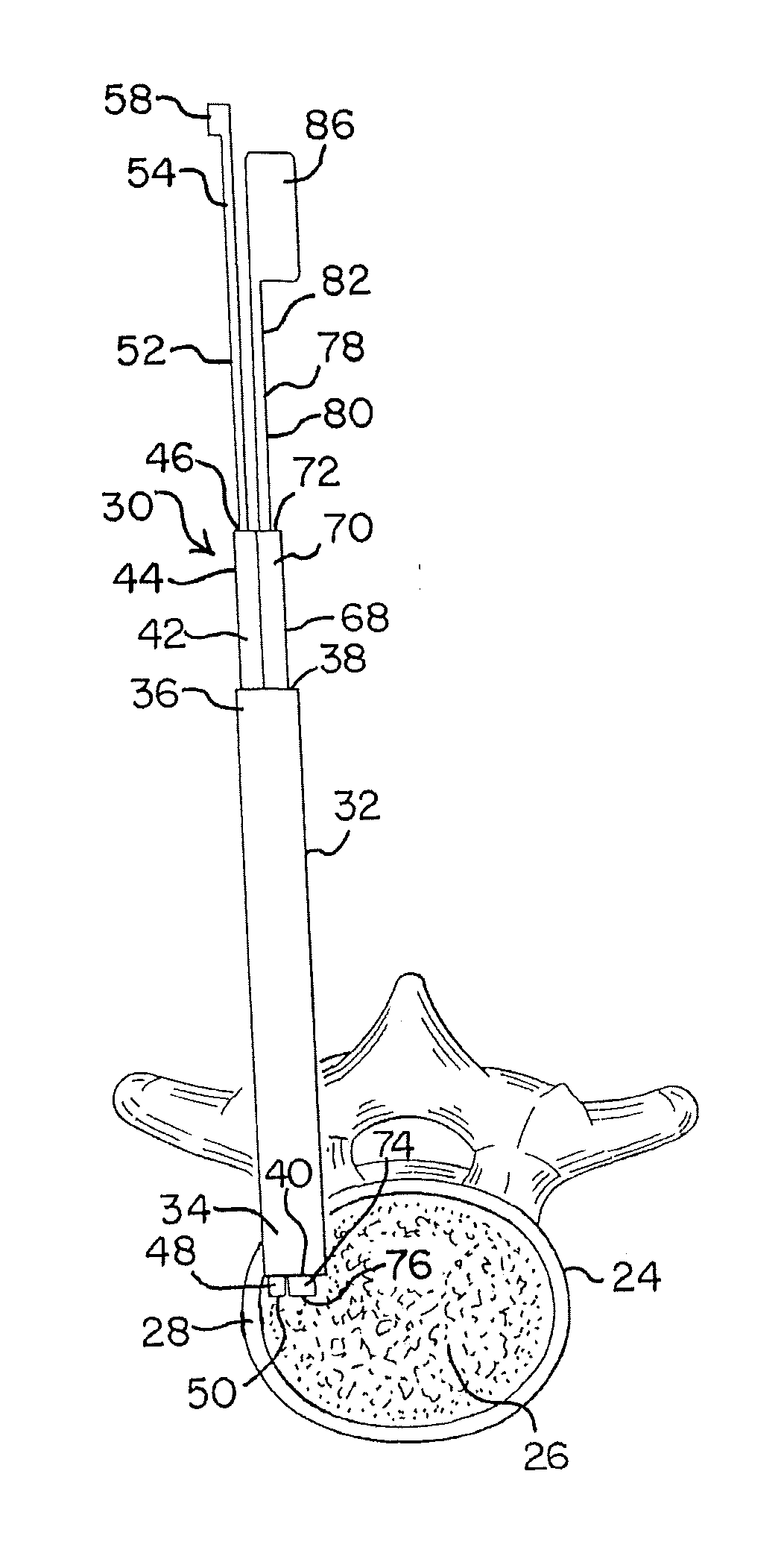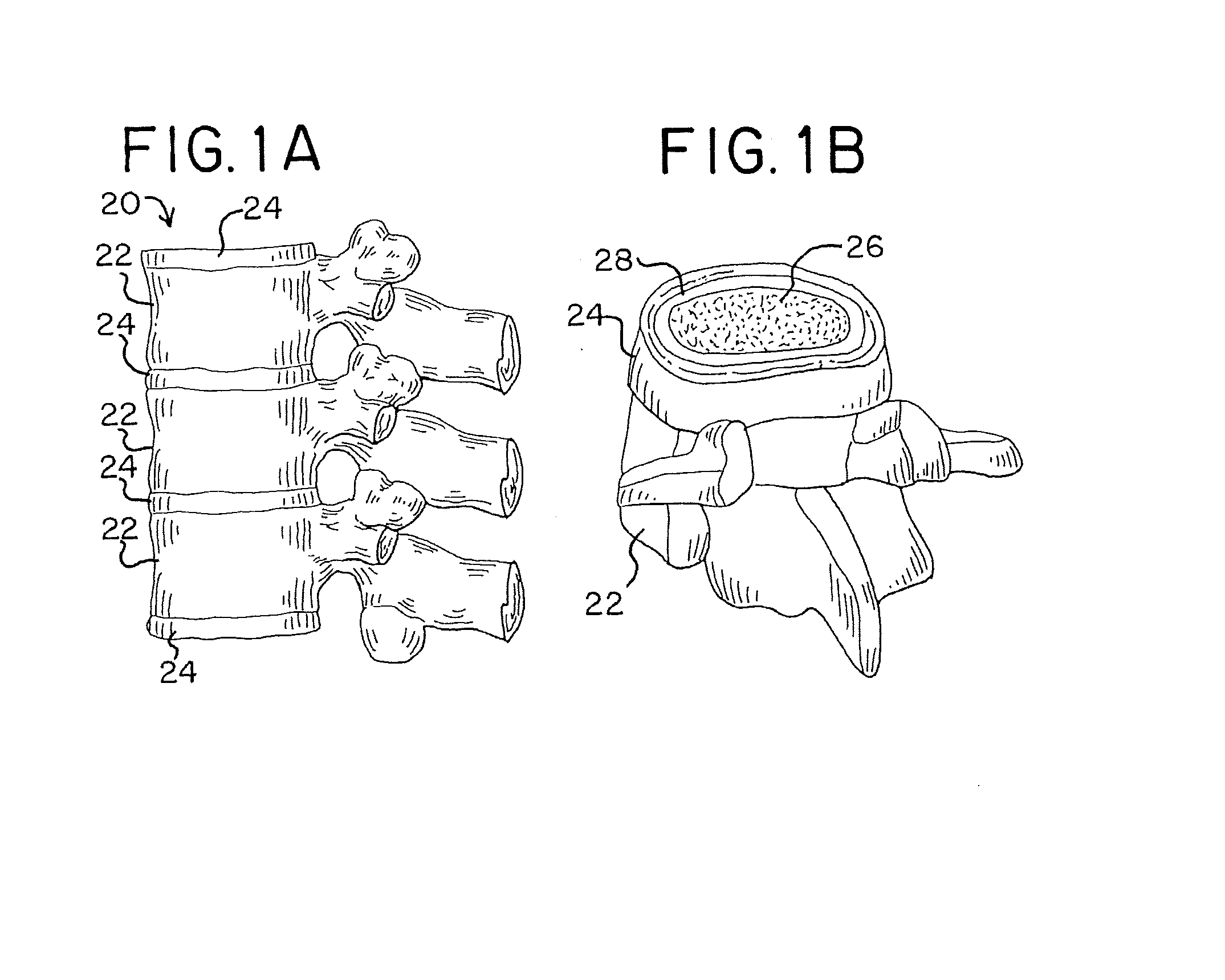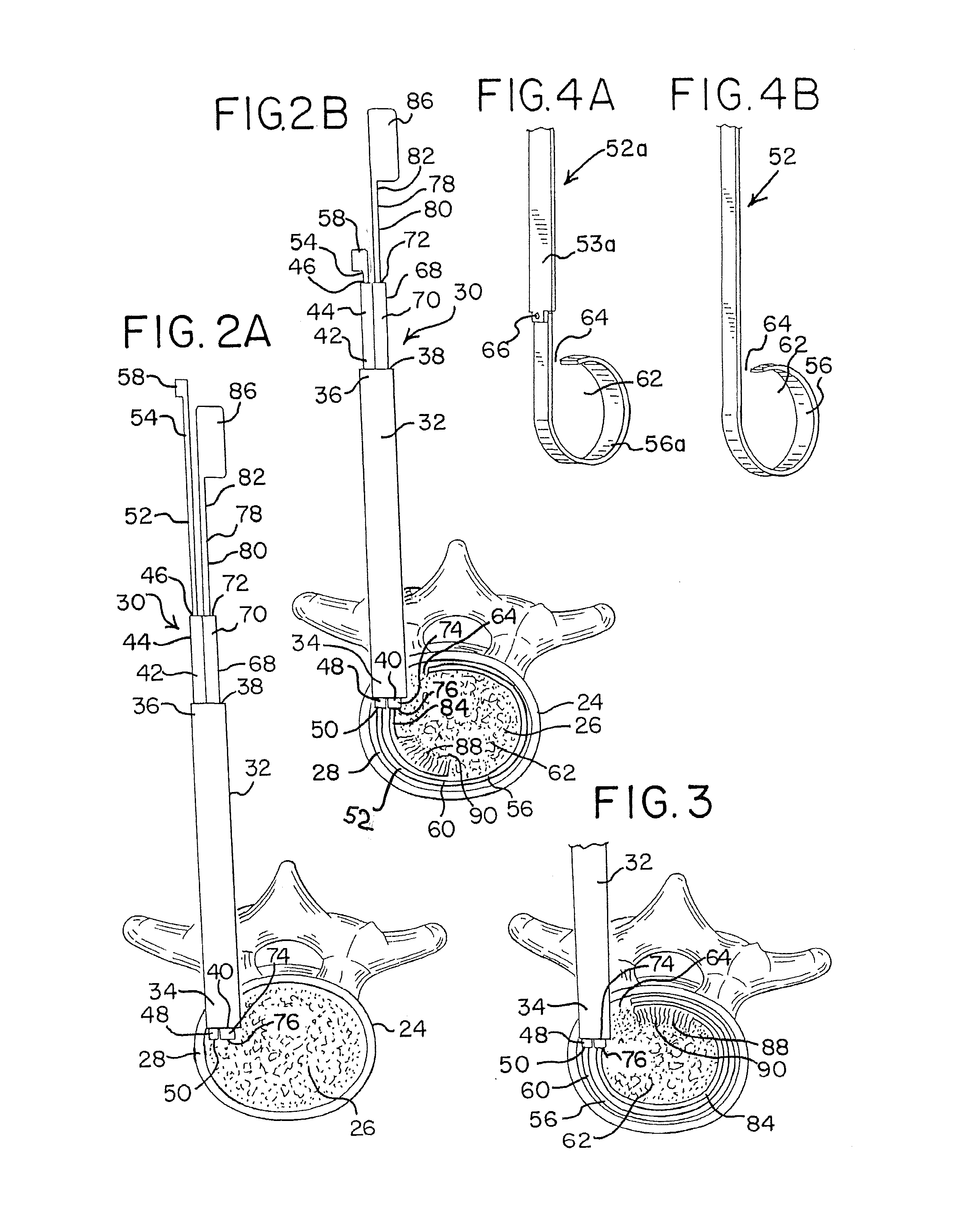Apparatus and methods for disrupting intervertebral disc tissue
- Summary
- Abstract
- Description
- Claims
- Application Information
AI Technical Summary
Benefits of technology
Problems solved by technology
Method used
Image
Examples
Embodiment Construction
[0091]The tissue disruption apparatus, tools and methods of the present disclosure may be utilized in any number of surgical procedures to disrupt (cut, scrape, brush, puncture, tear, grasp, extract, remove, etc.) tissue of a patient, but are particularly well suited for performing endoscopic discectomy procedures and preparing intervertebral discs for prosthetic implantation and spinal fusion. For example, such apparatus, tools and methods may be utilized in minimally invasive procedures that are conducted through an access port that has a diameter of between about 0.2 inches (5 mm) and about 1.2 inches (30 mm), and is typically between about 10 mm and about 12 mm. The tissue disruption apparatus and tools disclosed herein may be made from materials or include materials that are visible under x-ray, fluoroscopy or any other suitable imaging system. Such apparatus and tools may also be made of disposable materials, which are configured for single use applications. Alternatively, suc...
PUM
 Login to View More
Login to View More Abstract
Description
Claims
Application Information
 Login to View More
Login to View More - R&D
- Intellectual Property
- Life Sciences
- Materials
- Tech Scout
- Unparalleled Data Quality
- Higher Quality Content
- 60% Fewer Hallucinations
Browse by: Latest US Patents, China's latest patents, Technical Efficacy Thesaurus, Application Domain, Technology Topic, Popular Technical Reports.
© 2025 PatSnap. All rights reserved.Legal|Privacy policy|Modern Slavery Act Transparency Statement|Sitemap|About US| Contact US: help@patsnap.com



